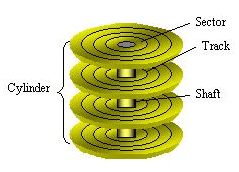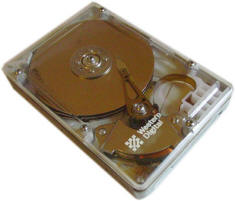Seek and You Shall Find
Your request
for a file passes through a lot of hands before it is read from the
drive and put into RAM. How long does it take to access the data on the
drive? Hard drives are often rated by “seek time.” Seek time is the
average amount of time to read from 2 to 2999 tracks on each side of a
hard drive platter. On the average you can expect a seek time of 8 to 14
ms. There are various ways that this find and seek can be optimized. One
way is to increase the cache. Hard drives are also engineered to improve
data access times and transfer rates.
The evolution of hard drives has produced two
widely used standards: IDE and SCSI. IDE means Intelligent
Disk Electronics and SCSI means Small Computer System Interface. They
are different architectures. What we need to know is that IDE is slower
than SCSI and less expensive. IDE systems transfer about 4 MB/s while
SCSI can transfer up to 20 MB/s.
IDE drives use the CPU for processing. SCSI drives
use a SCSI controller that handles the thinking. If I wanted to build a
very fast computer for work, I would choose a SCSI drive system.
However, it’s a compromise between cost and speed. Four times more cost
doesn’t mean four times more speed. So you pay your money and take your
choices.
That’s all from the Sandbox, where only the latest
and greatest survive!




